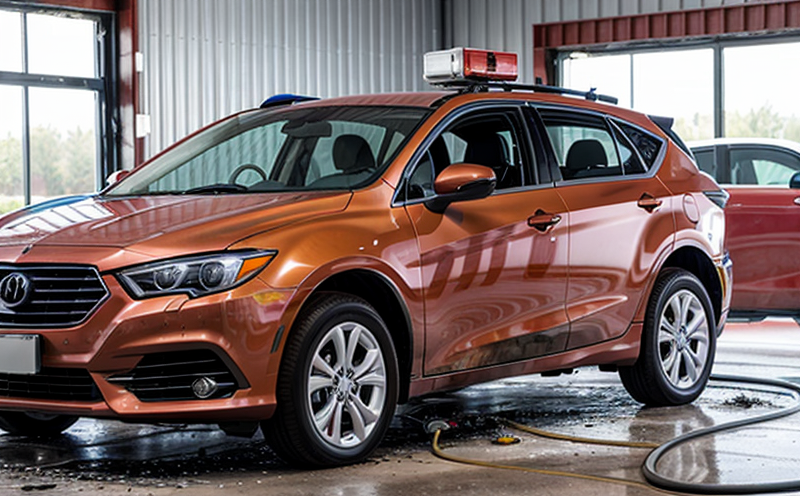Reaction-to-Fire Testing of Center Consoles
The automotive industry places a high priority on fire safety to ensure vehicles are safe and reliable. Reaction-to-fire (RTF) testing is critical in this regard, especially for components like center consoles that come into direct contact with the driver and passengers. This testing evaluates how materials perform when exposed to flames or other heat sources.
The purpose of RTF tests on center consoles is to assess their ability to resist ignition, prevent flame spread, and minimize the release of toxic fumes under fire conditions. This is achieved by simulating real-world scenarios where a component might be exposed to an open flame or other sources of heat. The test helps manufacturers identify potential fire hazards early in the product development cycle.
Center consoles are complex assemblies incorporating various materials such as plastics, foam, textiles, and metals. Each material reacts differently to fire, which is why RTF testing is essential for ensuring safety standards are met. This process typically involves placing a sample of the center console under controlled conditions in an RTF apparatus. The sample may be subjected to open flame or another heat source, and its behavior is closely monitored.
According to international standards such as ISO 13943-2 for reaction to fire performance of plastics used in interior parts of vehicles, the results are compared against specified criteria. These criteria ensure that the center console can withstand the test conditions without igniting or spreading flames too rapidly. Compliance with these standards is crucial for market entry and consumer safety.
During testing, it’s important to consider the environmental factors surrounding the sample, such as ventilation and heat exposure. The specimen preparation involves cleaning, drying, and conditioning the material according to specific protocols outlined in ISO or ASTM guidelines. This ensures that each test is conducted under consistent conditions for accurate results.
The apparatus used for RTF testing includes a furnace with controlled temperature settings, an ignition source capable of generating appropriate heat levels, and sensors to measure key parameters like flame spread rate and smoke density. The data collected during the test provides insight into how well the center console materials perform under fire conditions. This information is invaluable for product development teams in refining their designs and selecting safer materials.
The results from RTF testing are typically reported using a detailed protocol that includes descriptions of the observed behavior, measurements taken during the test, and comparisons against specified limits set by relevant standards. These reports serve as evidence of compliance with fire safety regulations and help guide future improvements in automotive design.
Benefits
- Ensures compliance with international fire safety standards such as ISO 13943-2.
- Identifies and mitigates potential fire hazards early in the product lifecycle.
- Improves overall vehicle safety by enhancing the performance of center console materials under fire conditions.
- Aids in selecting safer materials for use in automotive interiors, reducing risks to passengers.
Why Choose This Test
Choosing reaction-to-fire testing for center consoles offers several advantages. Firstly, it provides a robust methodology for assessing the fire safety performance of materials used in automotive interiors. By simulating real-world conditions, this test ensures that any component placed within reach of occupants meets stringent safety requirements.
The use of international standards like ISO 13943-2 guarantees consistent and reliable results across different manufacturers and regions. This consistency is crucial for maintaining a high level of consumer trust in automotive products globally.
Furthermore, RTF testing helps prevent costly recalls by identifying issues early on during the design phase. It allows engineers to make informed decisions about material choices and structural designs based on empirical data rather than relying solely on theoretical models.
The test also supports continuous improvement efforts within the automotive industry. As new materials are introduced or existing ones are modified, RTF testing provides valuable feedback that can be used to enhance fire safety features in future vehicle generations.
Environmental and Sustainability Contributions
- Reduces the risk of fires starting within vehicles, thereby minimizing environmental damage from potential accidents involving burning cars.
- Promotes the use of more sustainable materials that perform well under fire conditions, potentially reducing waste associated with product recalls due to safety concerns.
- Encourages innovation in material science focused on creating safer and greener alternatives for automotive interiors without compromising on quality or performance.





